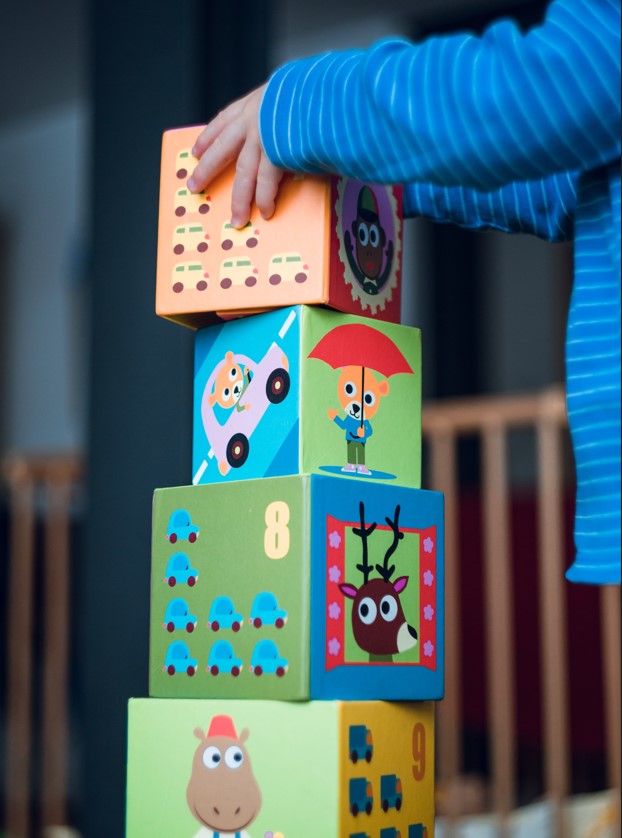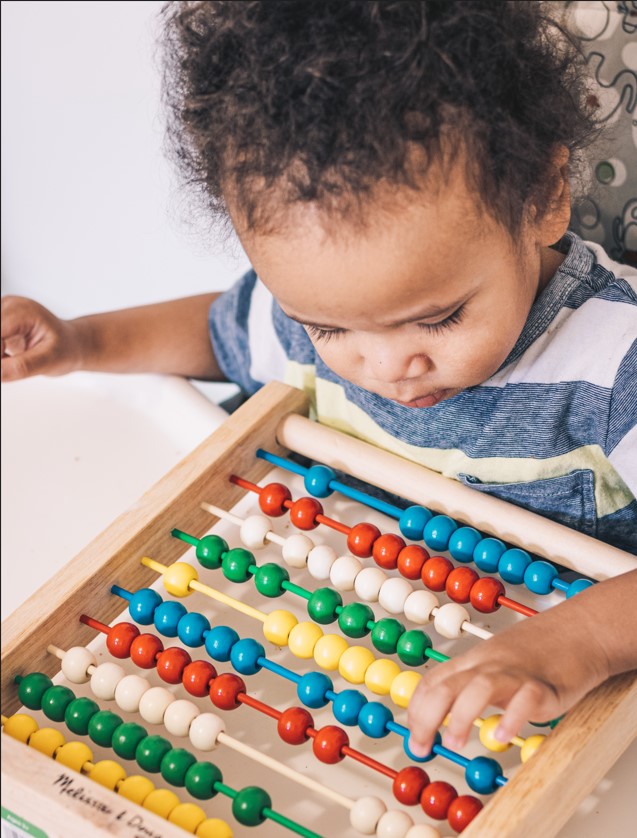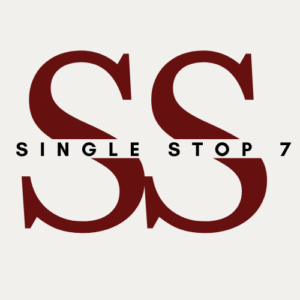Development Milestones of a Baby from Birth until 2 Years
As a parent, it’s important to understand the various development milestones your child will experience in their first two years of life. These milestones provide a roadmap for what to expect and help you understand how your child is growing and changing. They also give you a way to monitor your child’s development and ensure they are on track. Let’s cover the key milestones in physical, cognitive, communication, and social/emotional development from birth until 2 years old.
Let’s learn about the development of a baby for first 12 months.
Physical Development
The first year of a child’s life is filled with rapid physical growth and development. Here are the key milestones to look for in each stage of this process:
Birth to 3 Months
- Lifting head and chest when lying on stomach: This is a sign that your baby’s neck muscles are getting stronger, and they are learning to control their head movement.
- Bringing hands to mouth: This is a natural instinct that helps your baby explore the world around them and soothe themselves.
- Grasping objects with hands: This is a sign that your baby is developing hand-eye coordination and dexterity.
4 to 6 Months
- Sitting with support: This is an important milestone that demonstrates your baby’s ability to balance and control their movements.
- Rolling over: This is a big accomplishment that shows your baby is becoming more mobile and exploring their surroundings.
- Transferring objects from hand to hand: This is a sign of developing dexterity and hand-eye coordination, which are important skills for future development.
7 to 12 Months
- Crawling: This is an important milestone that helps your baby explore their environment and develop their coordination and strength.
- Standing with support: This is a sign that your baby is gaining confidence in their movements and developing the muscles they need for walking.
- Taking first steps: This is a big accomplishment that marks the beginning of your baby’s independence and mobility.
Here are the examples of physical development from which you can access the growth your child:
- Rolling over: A baby who was previously only able to lay on their back can now roll over from their back to their front, or vice versa.
- Sitting up: A baby who was previously unable to sit up on their own can now sit up unsupported.
- Standing up: A baby who was previously only able to sit up can now stand up with the help of furniture or support.

Cognitive Development
In their first year of life, your child’s brain is growing and developing rapidly. Here are the key milestones to look for in each stage of cognitive development:
Birth to 3 Months
- Tracking objects with eyes: This is a sign that your baby’s visual development is on track and they are learning to focus and follow objects.
- Responding to sound and voices: This is a sign that your baby is developing the ability to recognize familiar sounds and voices, which is important for social development.
- Recognizing familiar faces: This is a sign that your baby is developing their memory and forming attachments to important people in their life.
4 to 6 Months
- Imitation of simple actions: This is a sign that your baby is learning by observation and starting to understand cause and effect.
- Understanding cause-and-effect relationships: This is a crucial step in your baby’s cognitive development, as they begin to understand that their actions have consequences.
- Developing object permanence: This is the understanding that objects continue to exist even when they are not in sight, and is an important step in your baby’s cognitive development.
7 to 12 Months
- Solving problems through exploration: This is a sign that your baby is becoming more curious and independent in their thinking.
- Understanding simple commands: This is a sign that your baby is developing their language skills and starting to understand the meaning of words.
- Engaging in pretend play: This is a sign that your baby is using their imagination and developing their creativity.
Here are the examples of cognitive development:
- Reaching for objects: A baby who was previously unable to reach for objects can now reach out and grab toys or other objects.
- Understanding cause and effect: A baby who previously didn’t understand the concept of cause and effect can now understand that when they press a button, it makes a toy play music.
- Solving simple problems: A baby who previously wasn’t able to solve problems can now figure out how to get a toy that is just out of reach by crawling towards it.
Communication and Language Development
In their first year of life, your baby will experience rapid growth in their communication and language skills. Here are the key milestones to look for in each stage of this development:
Birth to 3 Months
- Crying to communicate needs: This is your baby’s primary way of communicating their needs, such as hunger, discomfort, or the need for a diaper change.
- Cooing and making vowel sounds: This is a sign that your baby is starting to develop their voice and communicate in a more sophisticated way.
- Responding to sounds and voices: This is a sign that your baby is starting to recognize familiar sounds and voices, which is important for social development.
4 to 6 Months
- Babbling: This is a sign that your baby is starting to experiment with language and develop their communication skills.
- Responding to their name: This is a sign that your baby is starting to recognize their own name and form a sense of self.
- Laughing and giggling: This is a sign that your baby is developing their sense of humor and starting to experience joy.
7 to 12 Months
- Saying first words: This is a big milestone in your baby’s language development, as they start to understand the meaning of words and use them to communicate.
- Pointing to objects: This is a sign that your baby is starting to understand the names of objects and use language to refer to them.
- Responding to simple commands: This is a sign that your baby is starting to understand the meaning of words and use language to follow instructions.
Here are the examples of Communication and Language development:
- Crying to communicate needs: A baby who was previously crying because they were hungry can now cry when they need a diaper change.
- Babbling: A baby who was previously only making simple vowel sounds can now string together consonant-vowel combinations, like “ba-ba-ba.”
- Saying first words: A baby who was previously only making sounds can now say their first words, like “mama” or “dada.”
Social/Emotional Development
In their first year of life, your baby will also experience rapid growth in their social and emotional development. Here are the key milestones to look for in each stage of this development:
Birth to 3 Months
- Smiling in response to people: This is a sign that your baby is starting to form social connections and recognize familiar faces.
- Becoming calm in response to familiar people: This is a sign that your baby is starting to form attachments and trust in familiar people.
- Crying when separated from familiar people: This is a sign that your baby is starting to form strong attachments and experience separation anxiety.
4 to 6 Months
- Enjoying social play: This is a sign that your baby is starting to enjoy interacting with others and forming social connections.
- Responding to emotions in others: This is a sign that your baby is starting to understand emotions and form empathy for others.
- Expressing emotions through facial expressions: This is a sign that your baby is starting to understand and express their own emotions.
7 to 12 Months
- Engaging in reciprocal play: This is a sign that your baby is starting to understand the social rules of play and interact with others in a more cooperative way.
- Showing affection to familiar people: This is a sign that your baby is starting to form strong attachments and show affection to important people in their life.
- Responding to their own name: This is a sign that your baby is starting to understand their own identity and form a sense of self.
Here are the examples of Social/Emotional development:
- Smiling in response to people: A baby who was previously not responding to people can now smile in response to familiar faces.
- Enjoying social play: A baby who was previously not interested in interacting with others can now enjoy playing peek-a-boo with a parent.
- Showing affection to familiar people: A baby who was previously not showing any affection can now give hugs or kisses to familiar people.
Now let’s read about the development of a baby of age 1-2 years.
Physical Development
At age 1, most children are able to walk independently, though they may still be unsteady on their feet. By age 2, children will have improved their balance and coordination, allowing them to run and climb with ease. In addition to walking and running, children at this age may also start to explore their physical abilities by throwing and catching a ball.
- Walking: For example, a child who was previously crawling can now walk without assistance.
- Climbing: For example, a child who was previously only able to stand up can now climb up on furniture.
- Running: For example, a child who was previously only walking can now run, though they may still be unsteady.
- Throwing and catching a ball: For example, a child who was previously unable to throw a ball can now throw and catch a ball with assistance.

Cognitive Development
As children move from age 1 to age 2, they make great strides in their cognitive development. They begin to understand the relationship between objects, and can now identify familiar objects and follow simple instructions. Children at this age also begin to engage in make-believe play, using toys and other objects to act out different scenarios.
- Identifying familiar objects: For example, a child who was previously unable to identify familiar objects can now point to and name objects, like a teddy bear or a book.
- Following simple instructions: For example, a child who was previously unable to follow simple instructions can now follow simple instructions, like “give me the ball” or “come here.”
- Engaging in make-believe play: For example, a child who was previously not engaged in make-believe play can now pretend to feed a toy or make a phone call with their fingers.
Communication and Language Development
Between the ages of 1 and 2, children’s language skills rapidly expand. They go from saying just a few words to speaking in simple sentences and following simple commands. Children at this age will also start to understand basic concepts, like “up” and “down,” and will be able to communicate their needs and wants more effectively.
- Saying more words: For example, a child who was previously only saying a few words can now say 50 or more words.
- Speaking in simple sentences: For example, a child who was previously only saying single words can now string together simple sentences, like “more milk” or “I play.”
- Following simple commands: For example, a child who was previously unable to follow simple commands can now follow simple commands, like “come here” or “give me the toy.”
Social/Emotional Development
At this age, children’s social and emotional skills also continue to grow. They may start to display separation anxiety when separated from familiar caretakers and may also start to show affection towards familiar people. Sharing and taking turns become important skills, as children start to understand the concept of sharing toys and other items. Children at this age also become more expressive and start to display a wider range of emotions, such as happiness, sadness, anger, and fear.
- Separation anxiety: For example, a child who was previously not showing separation anxiety can now become upset when separated from familiar caretakers.
- Sharing with others: For example, a child who was previously not sharing with others can now share toys with others.
- Displaying emotions: For example, a child who was previously not showing emotions can now display a range of emotions, like happiness, sadness, anger, and fear.
- Pretend play: For example, a child who was previously not engaging in pretend play can now play “house” or “restaurant” with toys.
Conclusion
In conclusion, the first year of a child’s life is filled with rapid growth and development, as they experience a range of milestones in physical, cognitive, communication, and social/emotional development. Understanding these milestones can help you understand your child’s growth and ensure that they are on track. If you have any concerns about your child’s development, it’s important to talk to your pediatrician for guidance and support.
Every child is unique and will progress at their own pace, so it’s important to remember that there is no “right” way for children to develop. If you have any concerns about your child’s development, it’s always a good idea to talk to your pediatrician or a developmental specialist.
The ages of 1 to 2 are a time of great growth and development for children. By paying attention to the key milestones, parents can gain a better understanding of their child’s progress and ensure that they are on track for future success.








